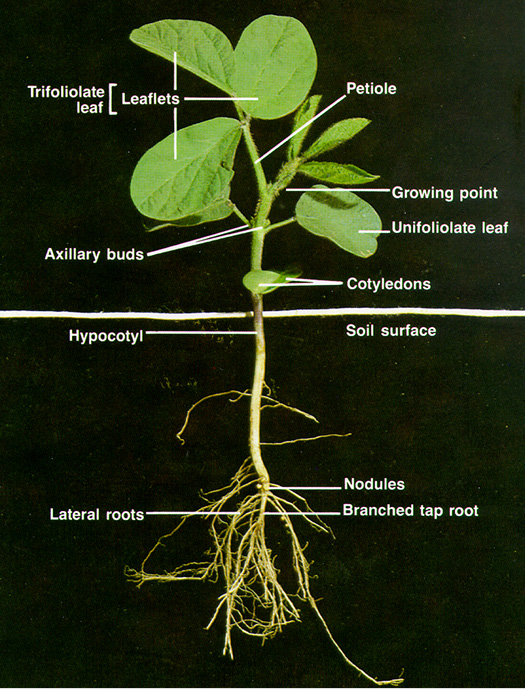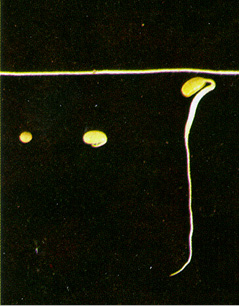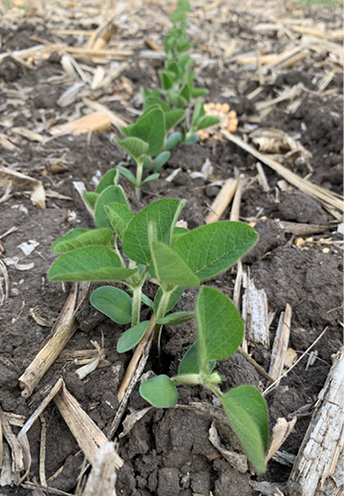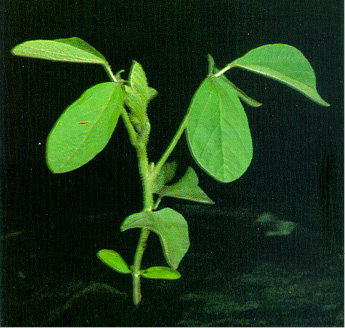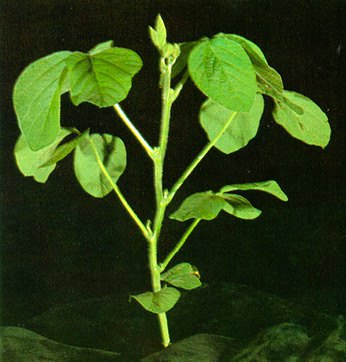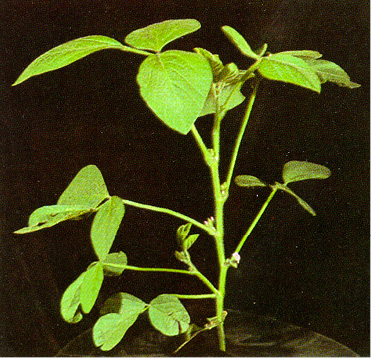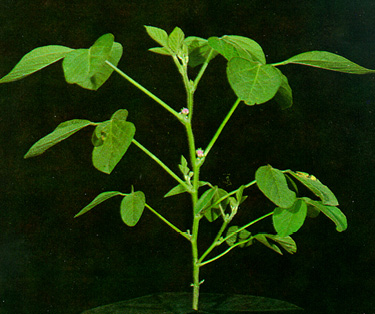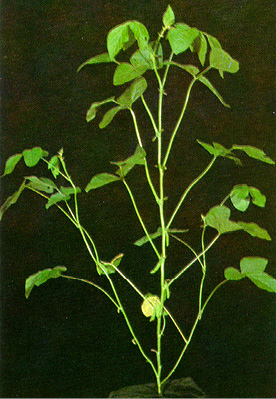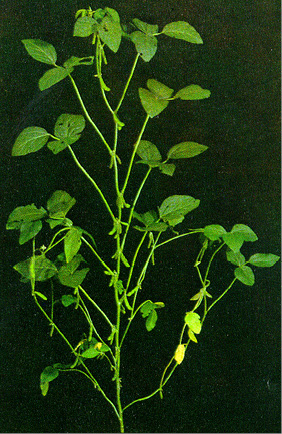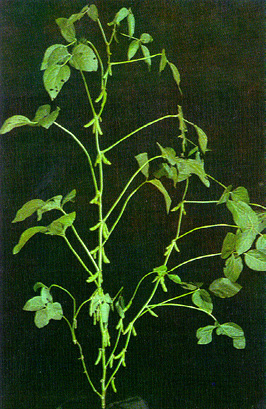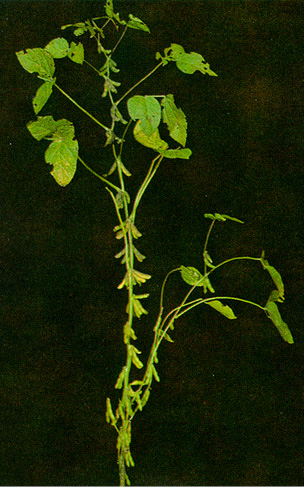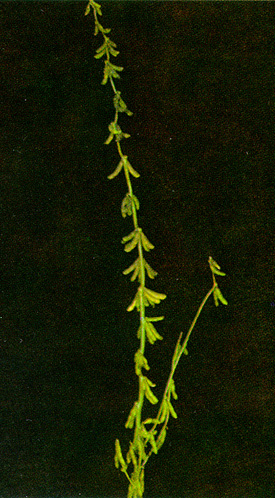Growth, development and seed yield of soybeans are a result of a variety’s genetic potential interacting with environmental and production management practices.
It is important for successful soybean production to understand plant growth staging and timing when making production decisions. Minimizing environmental stress, particularly during critical stages of soybean development, will optimize seed yield. Management practices that may influence crop growth include variety selection, field selection, seedbed preparation, plant establishment (planting date, rate, depth and row width), pest management (diseases, insects and weeds) and plant nutrition.
Soybean Plant
Soybeans are classified as either indeterminate or determinate in growth. Many southern varieties are determinate in growth and cease vegetative growth when the main stem terminates in a cluster of mature pods. Most northern (including North Dakota) varieties are indeterminate in growth habit. Indeterminate varieties develop leaves and flowers simultaneously throughout a portion of their reproductive period, normally ending during the early seed development growth stage. With soybean development being driven by photoperiod (interval in a 24-hour period during which a plant is exposed to light) and temperature, northern varieties have vegetative growth limited by the season length.
Shortening day length (increasing night length) and warm temperatures control soybean flowering. Soybeans in the northern U.S. have long minimum day-length requirements for the onset of flowering (often greater than 14 hours of daylight). However, even within a variety, variations in time of flowering may occur from year to year, with the same day length closely associated with temperature conditions.
Soybean maturity groups are based on adaptation within certain latitudes. These maturity belts run east to west in the U.S., with only about 100 to 150 miles from the north to the south of each belt. Maturity groups range from 00 in the extreme northern U.S. to VIII in the southern Gulf Coast states and most of Florida.
Planting a specific variety farther north than its adapted maturity range will extend the period of vegetative growth and delay flowering and maturity due to the extended summer day length and cooler temperatures. Likewise, planting a variety farther south than its adapted range will shorten the vegetative growth period, cause earlier flowering and result in an earlier maturity due to shorter summer day length and warmer temperatures.
Vegetative Stages
- VE (emergence)
- VC (cotyledon stage)
- V1 (first trifoliolate)
- V2 (second trifoliolate)
- V3 (third trifoliolate)
- V(n) (nth trifoliolate)
Reproductive Stages
- R1 (beginning bloom, first flower)
- R2 (full bloom, flower in top two nodes)
- R3 (beginning pod, 3/16-inch pod in top four nodes)
- R4 (full pod, 3/4-inch pod in top four nodes)
- R5 (1/8-inch seed in top four nodes)
- R6 (full-size seed in top four nodes)
- R7 (beginning maturity, one mature pod)
- R8 (full maturity, 95% of pods on the plant are mature)
The vegetative stages are defined by the number of nodes with fully expanded leaves. All V1 to Vn stages have true leaves (leaflet edges no longer touching) that are trifoliolate and produced singularly on different nodes, with these leaves alternating on the stem.
The reproductive stages are divided into four parts: R1 and R2 describe flowering, R3 and R4 describe pod development, R5 and R6 describe seed development and R7 and R8 describe plant and seed maturation.
